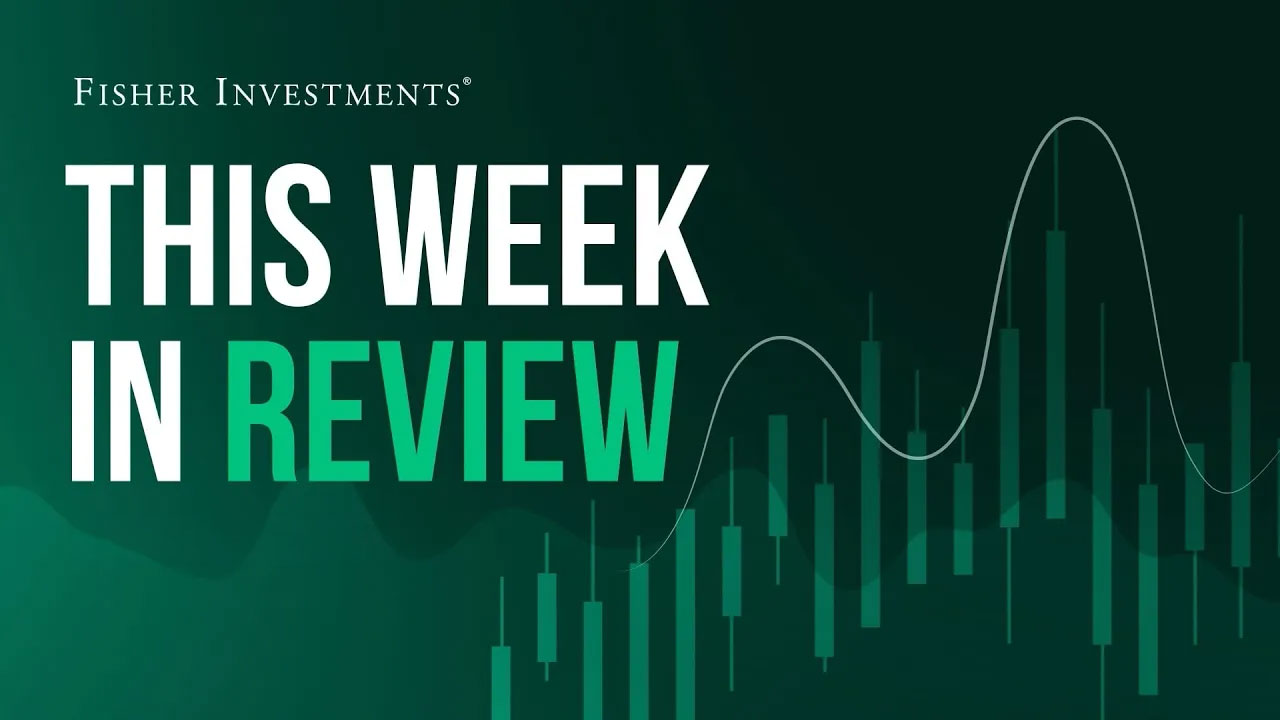Personal Wealth Management / Economics
PMIs Signal Global Growth Chugging Along
March PMIs showed economic activity expanding across most of the developed world.
With Q1 in the bag, purchasing managers’ indexes (PMIs)—timely indicators estimating the breadth of businesses’ expansion (but not their magnitude)—show the global economy mostly continued chugging along in March, ahead of early April’s major US tariff announcement. Furthermore, firms’ order books indicate more growth going forward, suggesting the global economy entered Q2 in better shape than widely perceived. We consider this as part of the backdrop in assessing evolving economic conditions now.
Exhibit 1 shows S&P Global’s composite PMIs—surveys combining services and manufacturing—are broadly positive, with readings above 50 meaning a majority see growth. Generally, this implies the PMI signaled expansion.
Exhibit 1: Global Growth (Mostly) in the Green
Source: FactSet, as of 4/4/2025.
Now, there are pockets of weakness. Japan’s composite PMI contracted last month, while France’s has been below 50 almost continuously since June 2023 (the Paris Olympics boosted activity briefly last summer). But dips below 50, while contractionary in PMI terms, don’t necessarily translate to actual, broad economic decline. As we hinted upfront, PMIs reflect how many firms see their business expanding or contracting—but not how much each business grew or declined. A minority of firms experiencing growth can outweigh a majority that aren’t. Especially if PMI readings are only somewhat below 50, making it fuzzier than that dividing line (and our green and red shading) suggests. For example, Japan’s GDP grew despite negative PMI readings last year, and so did France’s (though its Q4 contracted slightly).
The divide between services and manufacturing PMIs seems starker, with the latter seeing more widespread contraction. But this isn’t new or auto-recessionary: Services far outweigh manufacturing, particularly in the developed world. The world economy is around 62% services, rising to about 69% for “advanced economies” in aggregate.[i] Manufacturing isn’t nothing, but scaled correctly, it isn’t the swing factor many believe, as expansionary composite PMIs indicate. Then too, again, breadth doesn’t automatically equate to magnitude. Manufacturing output often rises despite sub-50 PMIs. For instance, actual eurozone manufacturing production rose in January (the latest available data) even though its PMI showed contraction then.
Worth noting as well, America has two separate sets of national-level PMIs: one from the Institute for Supply Management (ISM) and another from S&P Global featured in Exhibit 1. Neither is “better” or more accurate than the other. ISM’s series has a longer history, but S&P Global surveys more firms. In any case, March’s ISM services PMI fell -2.7 points to 50.8, and its manufacturing index -1.3 to 49.0.[ii] Though weaker, we don’t think the apparent divergence with S&P Global’s reading is very telling. We already knew services is relatively stronger, and as we explored, slightly-below-50 readings aren’t automatically alarming—while commentary dotting ISM’s releases suggests tariff apprehension is weighing on purchasing managers’ responses.
Although regional and sector variations are very much worth watching, the big picture matters most. And for global stocks, global output is growing overall. One way to measure this: S&P Global’s, well, Global Composite PMI, which rose to 52.1 in March from February’s 51.5.[iii] Not gangbusters, but a counterpoint to prevailing gloom. Moreover, forward-looking orders were positive, too. March’s Global Composite PMI new business subindex rose to 52.0 from 51.4 in February, while its new export orders component hit 50.1 from 49.7.[iv] Some of this may represent a rush to get ahead of tariffs. But the US is only a quarter of world GDP. Non-US trade appears to be in good shape and could pick up as global businesses forge new relationships and adapt to the changing commercial landscape.
Of course, economics are just one stock market driver. And, again, March PMI releases came before Wednesday’s tariff announcements. But ahead of “Liberation Day,” PMIs pointed to a global economy on sounder footing than feared. Here, at least, with fundamentals stronger than appreciated, positive surprise remains quite achievable.
If you would like to contact the editors responsible for this article, please message MarketMinder directly.
*The content contained in this article represents only the opinions and viewpoints of the Fisher Investments editorial staff.
Get a weekly roundup of our market insights
Sign up for our weekly e-mail newsletter.

See Our Investment Guides
The world of investing can seem like a giant maze. Fisher Investments has developed several informational and educational guides tackling a variety of investing topics.






